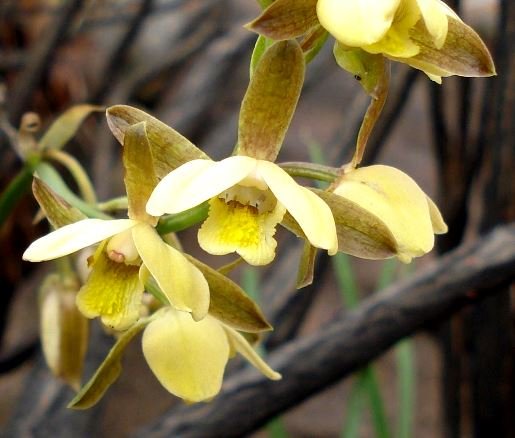Eulophia

Author: Ivan Lätti
Photographer: Judd Kirkel Welwitch
Eulophia is a genus of perennials, mainly terrestrial orchids growing from rhizomes, sometimes thickened into fibrous tubers or corms, while others are epiphytic, lithophytic or saprophytic. These differences indicate deriving nutrients and moisture from the soil, aerially, from rocks or from decaying material, some producing aerial pseudobulbs and deriving nutrients from fungi (mycotrophic).
Some species have leaves in two ranks (distichous) on a separate leaf-bearing shoot, present when the plants flower, while others produce inflorescences when the hysteranthous plants are leafless. A few species have succulent leaves.
The flowers grow in few- to many-flowered spikes emerging from the base of the leaf-shoots. In few cases the spikes branch into panicles. Many eulophias bear resupinate flowers. The three unequal but similar sepals usually spread or are reflexed. The petals are similar to the sepals or broader, often differently coloured. The lateral petals vary in size and colour, positioned higher than and in front of the lateral sepals.
The lips, often three-lobed, otherwise almost entire, are often embellished with crests or warts. There is usually a short spur or sac growing from the lower surface near or at the lip base. The generic name is derived from the Greek word parts eu- meaning good, well, true or original and lophos meaning a mane, a crest or a comb, referring to the crest on the flower lip.
The mentum, a small part projecting from the base of the column to which the lip is attached, is important in the identification of Eulophia species and their relationships within the genus.
None of the South African Eulophia species bears nectar, all relying on mechanisms of deception to attract pollinators.
The Eulophia genus comprises about 202 orchids found in the tropics and subtropics, more in Africa than in Asia and the Americas. The 42 species found in South Africa mainly grow in woodland, bushveld, savanna or grassland.
The plant in the photo with notched lip tip is Eulophia coddii (Liltved and Johnson, 2012; Manning, 2009; Leistner, (Ed.), 2000; Pooley, 1998).

